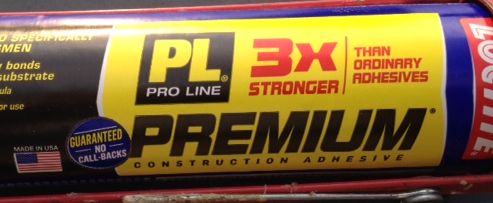I've been
building a worktable this week from salvaged wood and sheet metal. Today, I assembled the top. While I was prepping the metal, I decided to get a little creative and experiment with applying a patina to the sheet metal. After studying several different approaches and taking a quick inventory of what I had on hand, I decided to try both a black and a blue patina. Both require different processes and equipment and I ran into a little unexpected problem, but it was a good learning experience.
First thing I decided to do was set a pattern of colors rather than just random shades of blue, black and rust. Using simple painters masking tape, I taped off my pattern. This was to provide a mask for the black patina,which I was going to be applying via a spray on rust treatment. It turns metal black by chemically neutralizing rust.
 |
| Taped and ready for spraying |
Once I sprayed a light coat on, I peeled off the tape and moved on to the bluing. I decided to heat-treat to apply the patina, which worked well, but this is where my problem started. Since heating metal causes it to expand, and I was only heating areas that I wanted blued, I wound up with a wavy sheet of metal. This would be fine for artwork, but for a supposedly flat table top, not so good.
At any rate, I used a MAP torch to heat the metal until the blue patina began to appear. The metal heaved all along this area and then receeded as it cooled but the warping remained. The effect however was very interesting and fun to play with. I want to try other patinas in the future now that I've had a play with it. One thing that I think looks like absolute crap is the way the rust treatment came out. It apparently needs to be rolled on or wiped on in an even layer. I plan to go back over the table top, re-taping it and then wiping on a few more coats to get a uniform black. You can see below the graffiti effect from just spraying back and forth. Live and learn.
 |
| Did I say spraying? Should have rolled or wiped it on evenly. |
I did find some interesting effects with the torch and the rust treatment where they interacted. It gave the coating a nice brown effect that I actually much prefer to the black. Lemon juice left to etch steel for several hours will brown metal. In the future, I want to try that out as the brown, leathery look is very appealing to me.
While the metal sheet cooled on flat concrete, I used a scrap piece of 3/4" plywood to create the reinforced base for the table top. This got glued and screwed to the table base which was now fully assembled. Once I had that done, I put the salvaged and de-formicaed table top upside down on the garage floor and traced the outline of the base on the underside of the table top. Then I squirted half a tube of liquid nails all over within the outline and used a piece of plastic to spread it out somewhat evenly.
After laying the table base down on the table top, I screwed it together with more cabinet screws. At this stage, the table was really feeling solid. I could have left the metal top off and had a very strong and sturdy table and called it a day. But, I wanted my metal table top, so now I had to deal with the warping.
Turning the worktable back over, I put the sheet metal on top to see if the warping could be overcome just by weighing it down and gluing it. Not a chance - too much deformation had been created by the heat treating. So out came the trusty 3lbs. hammer and using the same scrap of plastic I used to spread the glue as a sacrificial barrier, I hammered out the high spots until the sheet was relatively flat, or flat enough that weights and clamps would get it down on another layer of liquid nails.
IMPORTANT: Make sure the adhesive you use is for METAL.
Hammering it out was a noisy affair, but the work table felt very solid underneath it and it was easy to tell when I had a section flattened out by the lack of deflection caused by each blow of the hammer. The hammering added an interesting dimpled effect that I hadn't planned on, but like most accidents that add interest to things I build, I don't mind leaving it. It sort of looks like it's supposed to be that way and I don't mind it. Call it a "distressed" look if you like.
One thing I also experimented with today was blackening wood to see if I wanted to do that as a treatment for the wood base of the table. As it turns out, pine doesn't blacken as well as hard woods and the effect is too inconsistent. It's neat, but not what I wanted to see. So, I'll use some left over wood stain instead (I have no shortage of that) and just put a good dark walnut stain on it after I soften up the wood with some soft-wood primer. Eventually, I'll be building a lower shelf to sit upon the bottom stretchers and might work a cabinet into the base of the table, but for now, there are projects besides this table that must be completed as soon as possible, so it will be going directly into service this week.
Once I have it stained and the top patina finished to my liking, I'll post up two more pictures of the final product.









